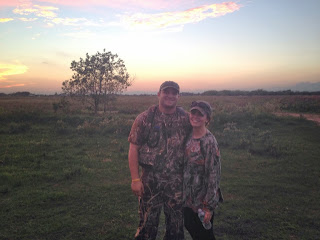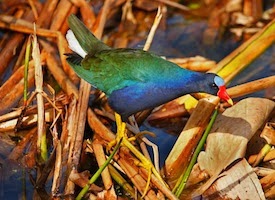Flashback: November 9, 2013
Louisiana is known as the, “Sportsman’s Paradise” and this
label couldn't be more spot-on. This
great state has everything the avid sportsman dreams about, all nestled in
51,843 square miles of diverse wilderness.
Deer, duck, fish, turkey, dove, coyote, alligator, hog… You name it, we
got it. If you ever want to experience
the full spectrum of game and fish sport, look no further than the Pelican
State.
Told ya.
On this particular day, my mindset shifted from chasing them
orange feet in the marshes of southwest Louisiana to the beautiful, brackish
waters Saint Bernard Parish. Like its
hunting counterpart, on the opposite side of the state, Saint Bernard offers
world class fishing to those who throw a line into its waters.
Just some point of reference.
But you'll never find my honey hole.
On a frigid November morning, once again accompanied by my wonderful
girlfriend, myself and two of my closest fraternity brothers pushed off with a
boat full of tackle and Miller Lite, eager to catch as many fish as humanly
possible. We set out across the waters of Lake Pontchartrain running along the
inlets of the Bayou Sauvage National Wildlife Refuge.
The Laziest Catch crew.
Equipment Check:
-
Tackle: Live bait (gulf shrimp and storm
minnows)
-
Line Test: 12 lbs
-
Gear: Shakespeare Ugly Stik GX2 Open Face and
Shimano Open Face/Bait caster
-
Rig: Carolina
-
Brew: Miller Lite
We made our first stop at a point in a waterway immediately
off the main shoreline of the lake. We
fished for 30 minutes to no avail. Our
problems were probably caused by the heavy boat traffic of duck hunters moving
from blind to blind in our general vicinity.
By the short interval between their shot volleys it was pretty evident
their day was starting off better than ours.
We packed up and headed to a new spot.
Thanks for the wakes, Elmer Fudds.
Our second stop brought us about two miles east of our
previous location, even deeper into the labyrinth of waterways. We anchored on a shoreline adjacent to the
intersection of two currents running perpendicular to each other. The spot looked promising and I had a great
feeling about it. If you can find a spot similar to this one, be patient and do not move. Give it some time. Fish love when two different currents come together at a point. The intersection provides the perfect break in current velocity and they don't have to expend energy on drifting. Coupled with this is the fact that food is literally brought to them on two sides conveyor belt style. The stored energy and proverbial buffet kick up their aggression and makes for a surefire catch environment.
Current moving in from the left.
Current moving in from the right, and their meeting point.
I grabbed my rod, slapped a live shrimp on the hook and threw my line out 25 yards from the starboard side. The second my line hit the water I got a bite. I reeled in a beautiful 15 inch trout that exceeded the 12 inch state requirement to keep the fish. After that catch, it was game on. We were pulling in fish from all sides! It was unbelievable. Over the next 2 hours we landed 23 trout, 3 flounder and 2 red fish. The sight and experience was one for the ages.
My first prize of the day.
And hers.
Asserting dominance.
We started filling up pretty quickly.
Eventually, as if someone had flipped a switch, the action
ceased. We packed up and headed due east
towards a honey hole on Lake St. Catherine.
At this point, the day was coming to an end and we were catching more snags
than fish, as we were fishing off a rocky point. When we were just about ready to pack it in
and call it a day, myself and a fraternity brother hooked big fish at the
exact same time. We both landed some
beautiful red fish. There was no way we
were leaving now. We each pulled in a
few more reds, while Denise, my girlfriend, was sitting down trying to shake of
sun burn and fatigue. However, she caught a second wind, grabbed her rod and
threw out a line. A minute later she got
a huge hit, and that line ran like no other.
She freaked out and we talked her through the fight and got her back in
the zone. Slow and steady always wins
the race and sure enough, she brought a monster red up to the side of the boat,
grabbed the net and hauled that sucker in.
The look on her face was priceless.
She, including everyone else, will never forget that day.
My red...
And hers.
It’s always nice to get a change of scenery as a sportsman, and
when you live in Louisiana the transition is incredibly easy. For those hunters out there who find
themselves wrapped up in the motions of day to day hunting, I highly recommend you
set down the rifle, grab a rod and your closest friends and hit the water. The change of pace is truly liberating. Enjoy the pictures, y'all. Until next time, good hunting… or fishing!
Great view from the bow.
My backhand technique could use some work.
Just taking it all in.
What's a trip without selfies?
We're kind of a big deal.
Moving between spots was a bit of a struggle.
Jordan Lieberman (left) myself and Marcus Davis (right). My Sammy fraternity brothers.
Laying out the spread later that night.
Filleting them took forever. Better than watching an LSU blowout at the hands of Alabama, though.
I think we found where all of our live bait was going.





















































